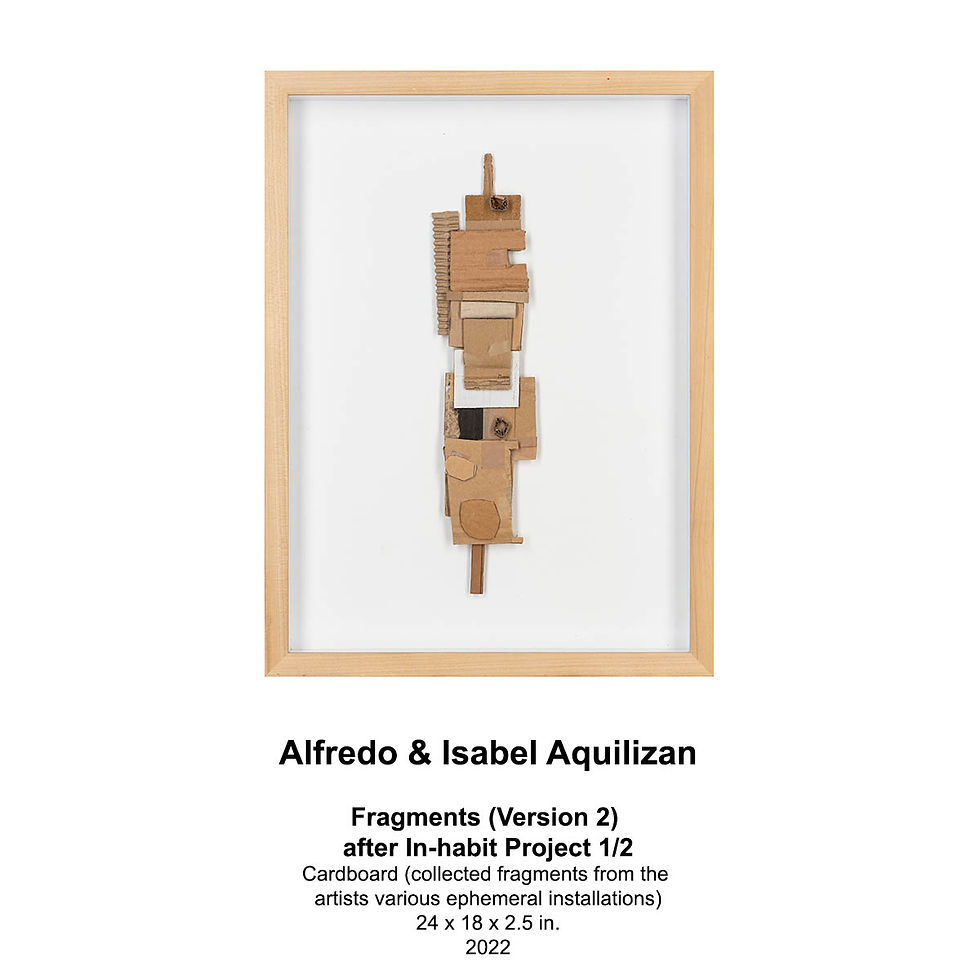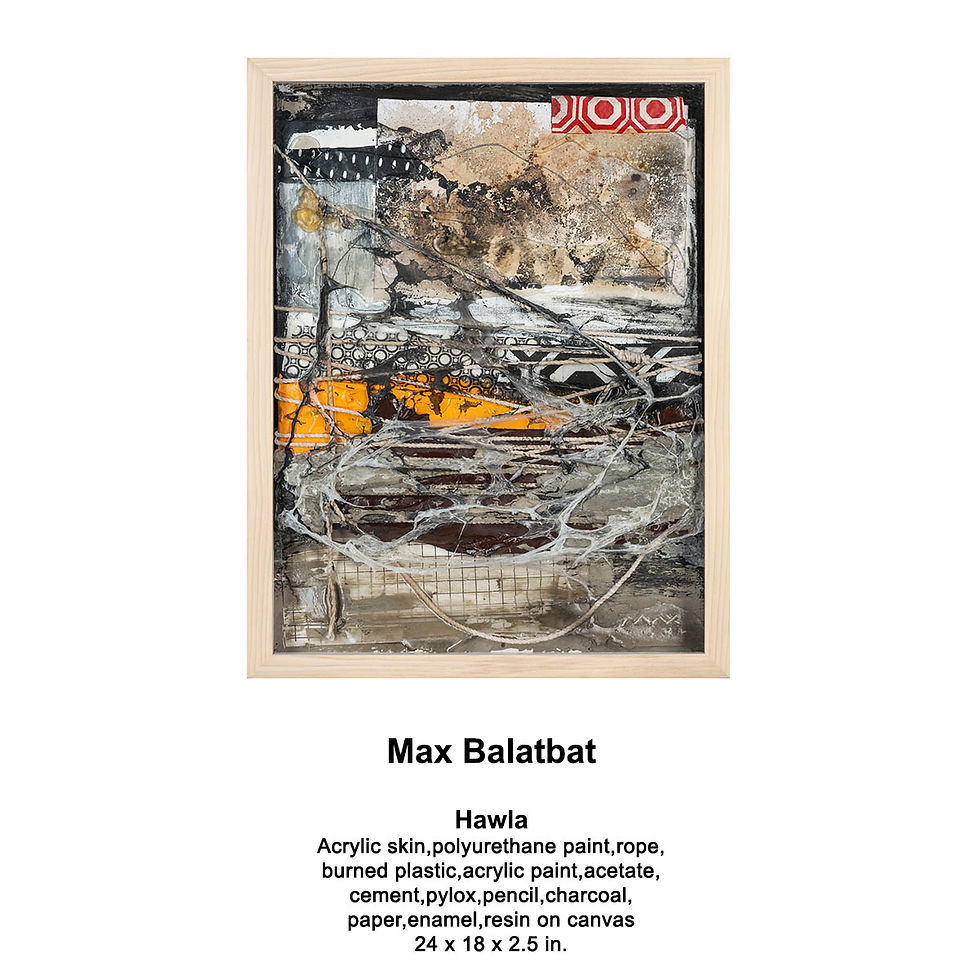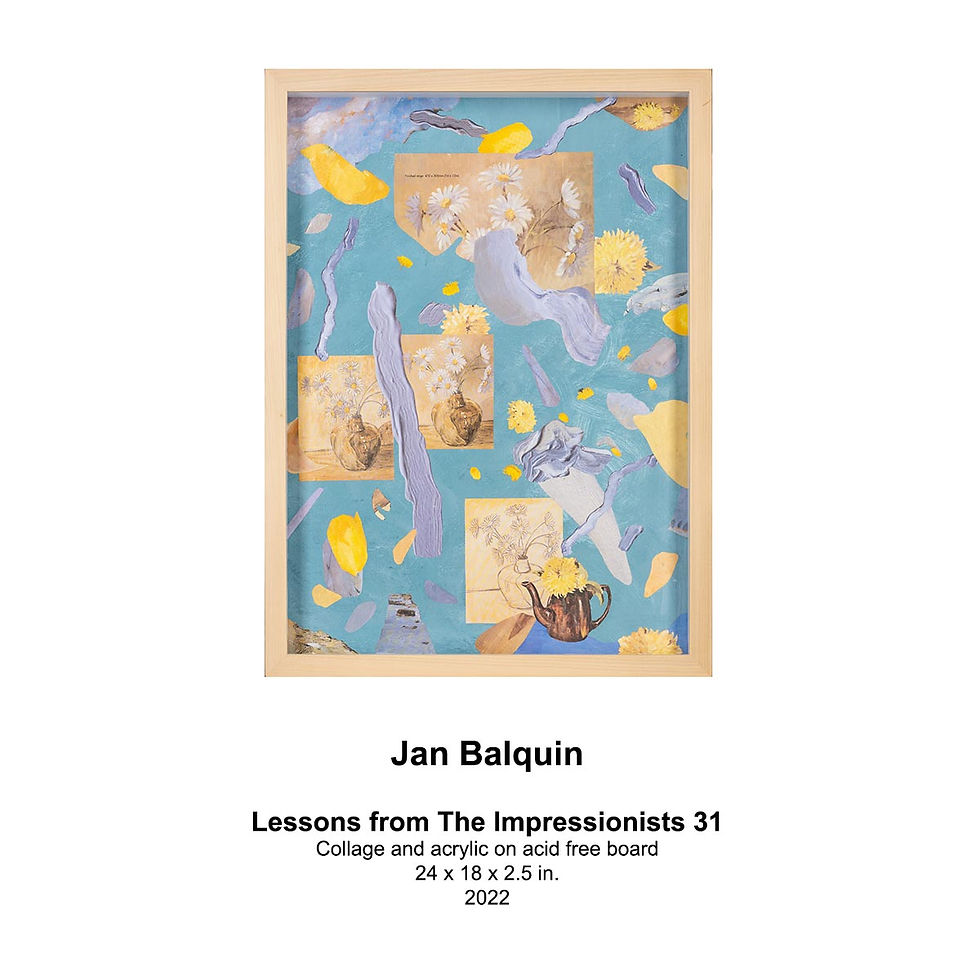Helping Hands - Chapter 3
A Room to Think
1 Sierra Madre St, Grand Heights Subdivision
Antipolo, 1870 Rizal
The recent pandemic has been a testament to the power of Art—and of artists
—to help the rest of society. Far from the idea of solitary geniuses toiling away
in their respective studios, artists were among the first to reach out by creating
shareable memes that encouraged everyone to stay at home, valorize the
efforts of our doctors and front liners raised people’s morale and inspired hope
in the face of uncertainty. They, too, were among the first to donate artworks, to
raise funds for the badly needed personal protective equipment (PPE) of the
medical practitioners who faced the dreaded and still very unfamiliar COVID-19.
Within a week into the community quarantine, the Art collectors’ group
Art Rocks/Art for Life raised P15 million to buy PPE and test kits for distribution
at the Philippine General Hospital, with the help of collectors and artists who
gave their works for this purpose, and this came when the government was
pressed for resources with the manifold and competing needs of the country. There
were certainly numerous other initiatives, many of them led by artists, which
catered to various needs at that crucial time—and all despite Art being considered
“non-essential” by the powers that be. Art and, by extension, artists have indeed
been crucial to both the mental and physical survival of segments of society.
But this was not the first time that the artists used Art to raise funds for the
people. During times of crisis, from the Baguio earthquake in the 1990s to
the super typhoon Yolanda two decades later, and many calamities prior and
hence, artists have always been there to help with fundraisers for the community.
And many artists have also supported fellow artists and members of the art
ecosystem, through ad hoc and often reactionary fundraisers.
Sadly, artists, with no industry regulation and few guilds or organized groups for
them to join, are also among the most vulnerable, as many cannot afford their own
personal health insurance nor are conscious enough to have even PhilHealth
and SSS. Such was the concern out of which the noble advocacy of Helping Hands
was formed. Spearheaded by artist Daniel dela Cruz, the endeavor began
with initial invites in June 2016 to artists Elmer Borlongan, Plet Bolipata,
Pam Yan-Santos, and John Santos, to have a fundraising exhibition for the purpose
of helping the art community in times of need. From this, it grew quickly to include the
other founding artists of the initiative, namely: Johnny Alcazaren, Max Balatbat,
Renz Baluyot, Zean Cabangis, Mariano Ching, Alfredo Esquillo, Manny Garibay,
Renato Habulan, JC Jacinto, Romeo Lee, Ferdie Montemayor, Raffy Napay,
Veronica Pee, Christina Quisumbing Ramilo, Arturo Sanchez, Soler Santos, Yasmin Sison,
Hamilton Sulit, and Reg Yuson. Casting their hands and producing amazing artworks
with the reproductions, which were exhibited and sold afterwards at the Pinto Art Museum,
together the artists came up with the seed fund of the initiative. It has since evolved into
the SEC-registered Visual Arts Helping Hands Foundation, Incorporated (VAHHFI),
non-profit to help not just artists, but also members of the art community at large,
which would include, but is not limited to, gallerists, art writers, art handlers,
and museum workers, among others, by assisting them with their medical expenses.
And to ensure that the funds and other resources are administered judiciously,
the VAHHFI has an organized board with the venerable medical doctor-art patron-gallerist
museum founder Dr. Joven Cuanang on it. The other board members are artists
anny Garibay and Reggie Yuson; collectors Jonathan Que, Mike Tomacruz, and
Atty. Tonico Manahan; and art fair founder and art writer Trickie Lopa. Parallel
to the effort of creating a medical emergency fund for artists and members of
the art community, Helping Hands: Chapter 1, as the exhibition was known,
was “an artist initiative aimed towards giving back to the visual arts community…
as counterweight to the augmenting commercialism of the field, it looks to create
a fund-giving body that would respond to the emergencies and other needs of its
practitioners. This also extends further to society at large with selected charities
as part of their beneficiaries for the project.” Focusing on the artists’
hands as both the subject of and the metaphor for the project, Helping Hands:
Chapter 1 was a hand that reached out to fellow artists in need, as well as a hand
that reached out to the community at large. From the proceeds of the project,
the initiative also gave a donation to the Center for Possibilities, a non-profit
organization that gave sanctuary for children with special needs. For its inaugural year
and formal launch, the Visual Arts Helping Hands Foundation, Inc., held the
exhibition in Antipolo at the Pinto Academy for Arts and Sciences, or more
commonly referred to as the Pinto Art Museum, from Sept 24 to October 8, 2017. In
the exhibition, the 24 artists involved each produced a limited series of
12 artworks made from casts of their own hands, 11 of which were made available for
purchase in pre-selected groupings to collectors. The initiative was so great a success
and a historic first, that The organizers saw the need to continue it to foster
a stronger sense of community and family among the visual arts practitioners
within our country. With the two-fold aim of becoming self-sustaining and
increasing its membership, VAHHFI conceptualized a biennial exhibition format.
Following that decision, Chapter 2: The Empty Chair Project was exhibited
at the Metropolitan Museum of Manila from November 12 to
December 10, 2019. From the initial 24 artists, the inclusion of 38 new artists
increased the VAHHFI community to 62. Each new artist participant had as
their canvas five chairs provided by the foundation. These chairs were produced
n Denmark by Hays, indicating the group’s stance in upholding quality in all its projects.
In every set, one special-edition work was derived from a stool which could be
painted or freely deconstructed by the artists as they deemed fit, while the remaining four
chairs were made into artworks that remained functional for sitting. The chair was
chosen as the subject of the exhibition as it focused on the idea of accommodation.
The simple act of offering somebody a seat is an acknowledgement of the person and
a recognition of a shared humanity. Tina Colayco, the President of the Metropolitan
Museum of Manila, in her welcome address noted that this was a “forceful expression
of empathy for others and unity for a cause.” In his letter of invitation to the guest artists,
founder Daniel dela Cruz said that presenting the chairs was a visual analogy to offering
support to somebody. Though Chapter 2: The Empty Chair Project focused
on mental health, dela Cruz was quick to point out that “it doesn’t always have to mean
anxiety, depression, or similar issues; rather, it could focus on mental fitness.
”He reiterated the “need to remember to take time to relax, de-stress, and rest our
minds and our souls.” The initiative was not just a fundraiser for the foundation;
it also had the Metropolitan Museum as the main beneficiary, and a coalition
of six active mental health advocacy groups as secondary beneficiaries. The event
was well attended and created a ripple effect in the community. It was able to
raise a significant contribution to the museum and the secondary beneficiaries
who carried on their help to those who needed counseling, support groups, or healthy
avenues to process their grief, depression, trauma, and other issues. Sadly, as
we all know, the country soon went into a prolonged lockdown from March 2020
to September 2021. A reprise of The Empty Chair Project was staged
at the Art Lounge Manila in The Podium from July 11 to 30, 2022, in recognition
of the need to reconnect after the lockdowns, and also because two members,
Riel Hilario and Leo Abaya, were lost to illness during the emergency community
quarantine. The exhibition brought together some of the artists after two years of
isolation and introduced the initiative to new audiences. To date, following
the screening and administration protocols set by the board, VAHHFI has assisted
a significant number of individual members of the community—artists, art writers,
and gallery professionals—on top of the many institutional beneficiaries and program
partners that it has helped since its founding in late 2017. Several of the recipients
had benefitted from the Emergency Pandemic Policy, which made it even faster and
easier for those suffering from COVID-19 to avail of assistance. The proficient
performance and judicious administration of assistance was noticed by the Metrobank
Foundation and a formal collaboration agreement with VAHHFI is now being finalized.
For January 2023, VAHHFI has invited artists for Chapter 3: A Room to Think.
Taking cue from the experience of being largely indoors for over two years,
A Room to Think invited participating artists to see what they went through in
retrospect and envision new ways for all of us to live and dream. For some, the time of
lockdowns, restrictions, and quarantine was an extended period of imposed solitude
that tested their limits as persons; for others, it was a blessing to stay together with their
loved ones at home. A Room to Think gives everyone different vantages
from which to ponder how we have all been changed deeply by the experience.
For this exhibition, sets of four standardized boxes frames were sent out,
symbolizing the process of being aware of the pandemic’s effect on the artist, as well as
the compassionate attempt to “reach out” of our boxes in empathy. One box measured
18 x 24 inches, and the other three were smaller at 12 x 18 inches. The artists were
given the freedom to choose their medium or materials. While 24 artists participated
in Chapter 1 and 45, in Chapter 2, this new exhibition features 71, 30 of them new to
the VAHHFI project. Collectively, these 71 artists have made more than 245 artworks
which will be exhibited in an entire wing of the Pinto Art Museum in January 2023.
A percentage of the proceeds will go to the Metrobank Art & Design Excellence
Community Aid and Relief for Emergency Situations or MADE CARES program,
as a joint effort of VAHHFI and the Metrobank Foundation to empower the art
community and to help it rises from uncertainties like the pandemic. On its fifth year,
the Helping Hands initiative has reached out not only to more artists and community
members, but also to vulnerable segments of the society. Particularly during the
past two years, it has not merely given some assistance to members of the art
community, but to other segments of the population as well. In so doing, it
has performed a crucial task of proving that with a good organization, models for
artists to help other artists are not only viable but, more importantly, empowering.
Under the astute leadership of the board, VAHHFI has become not just a historic
initiative but an essential beacon in safeguarding the welfare of our artists who,
though underserved themselves, are always among the first to give the
community a helping hand








